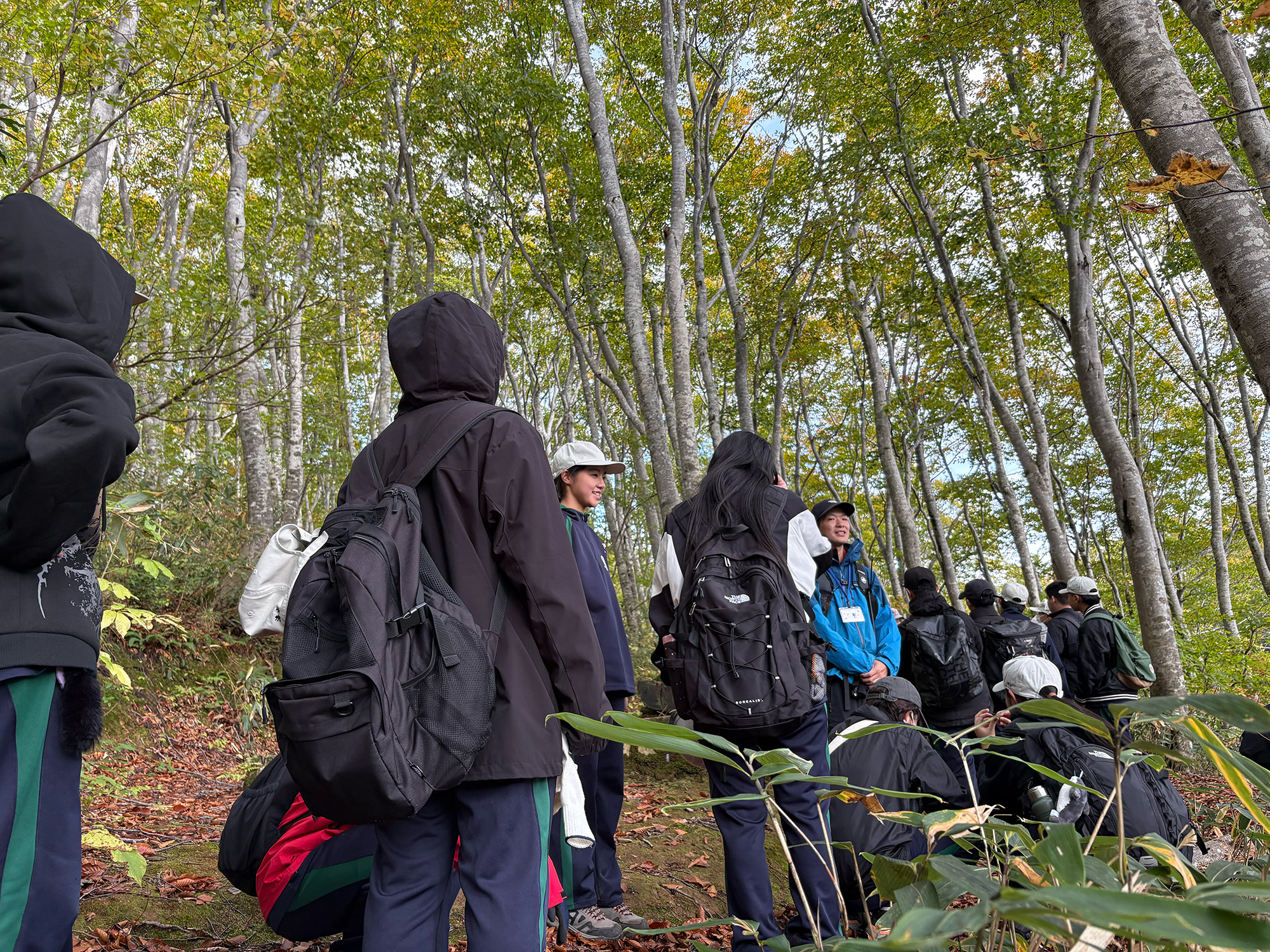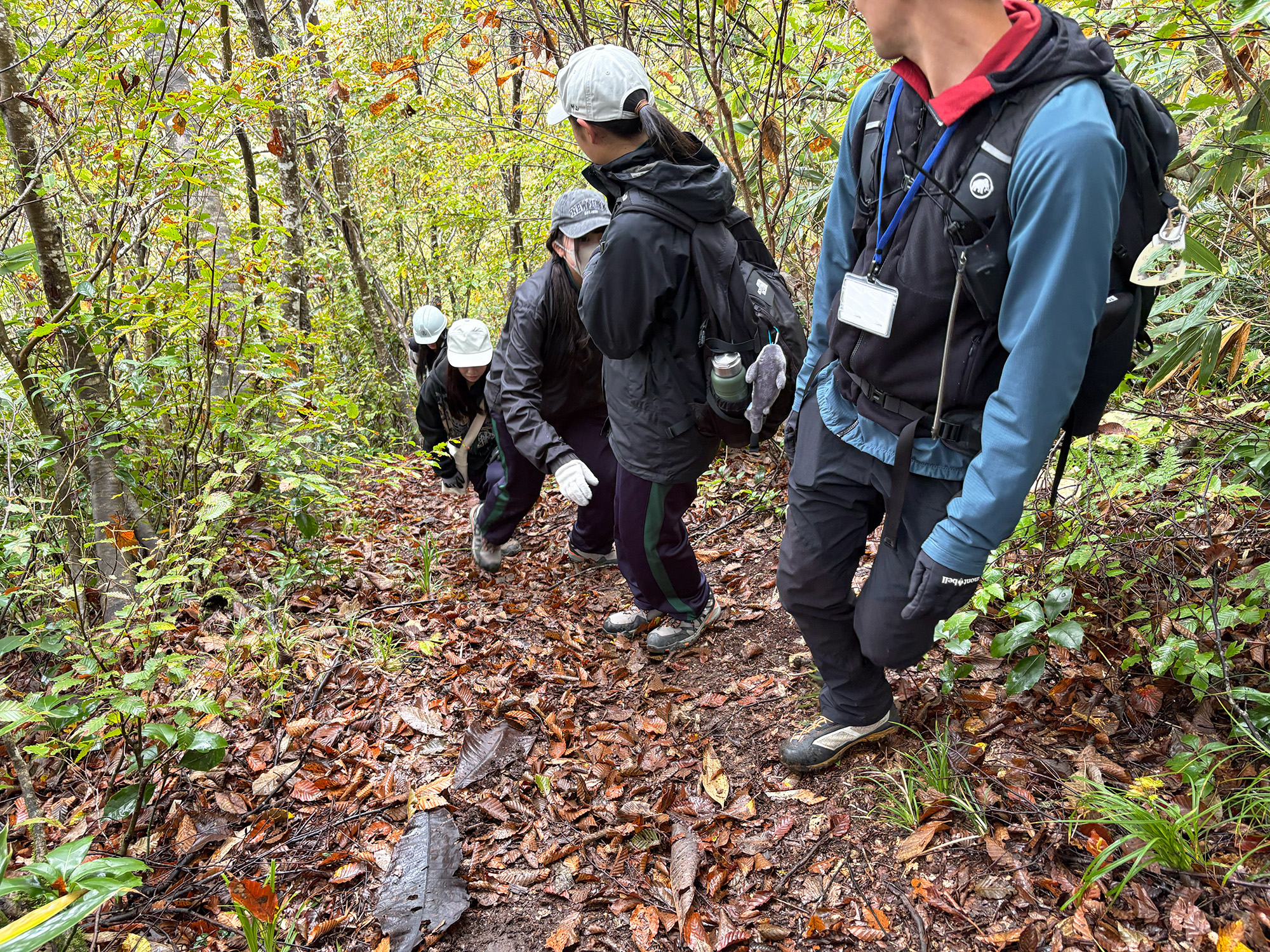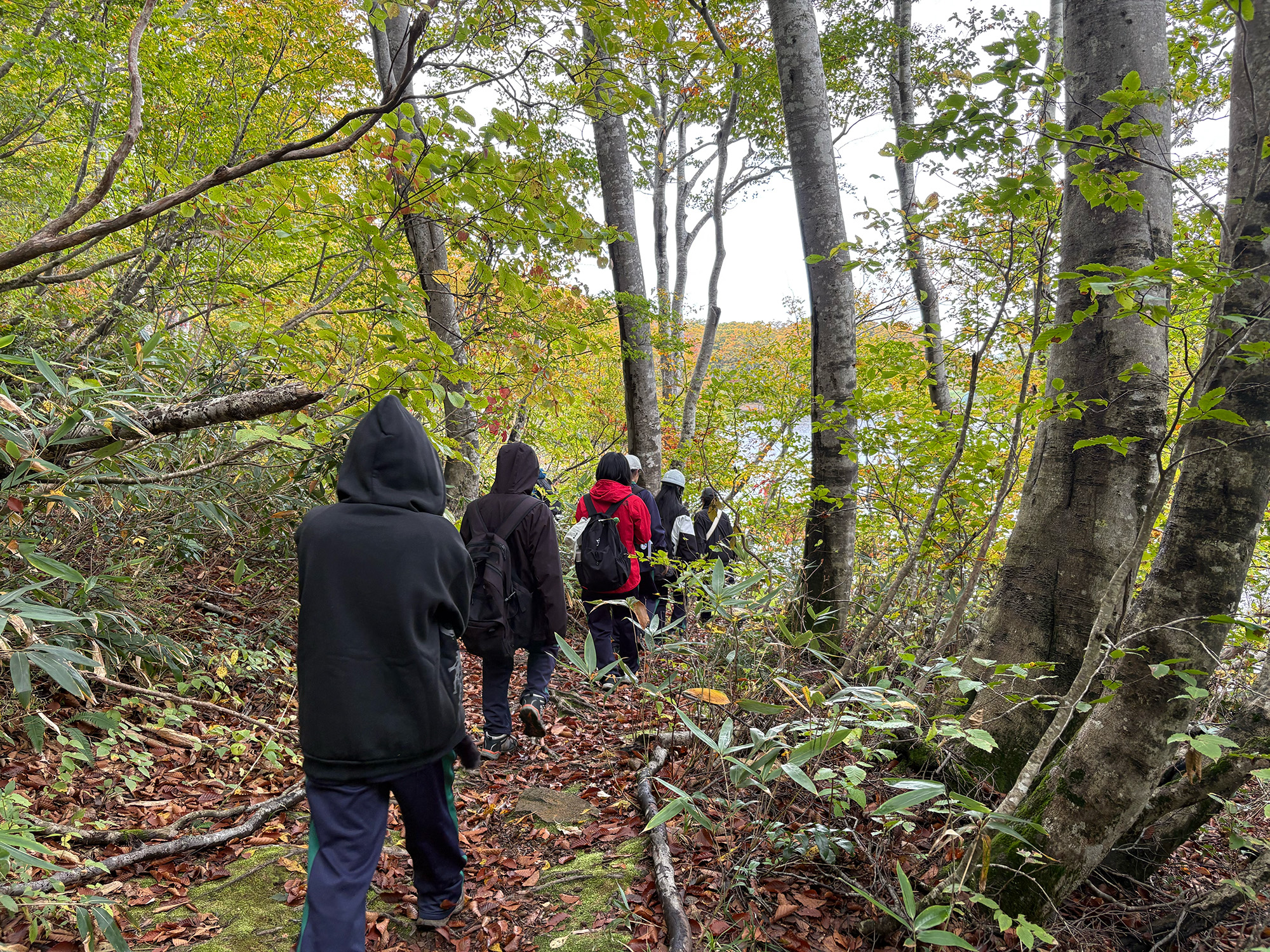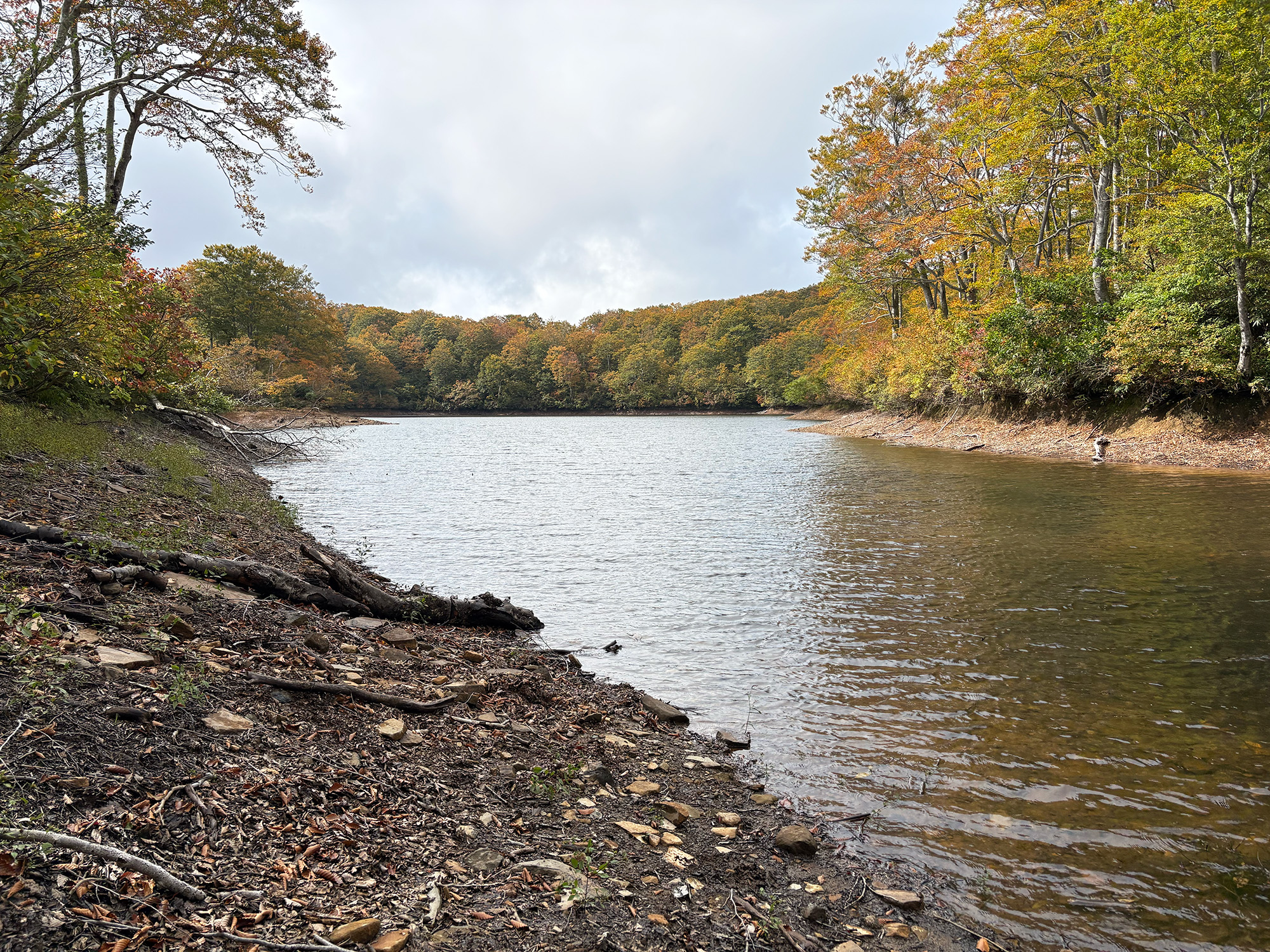なべくら高原は全国でも有数のブナの原生地であり、そこを長野県と新潟県の県境に連なる総延長110kmの信越トレイルが貫いています。環境創造コース2年生は10月21日(火)同トレイル5kmのコースを歩く広葉樹林研修を実施しました。
クマ対策をしながら、ガイドの案内で急峻な通路を登り茶屋池を目指しました。道すがら「小さな池が散在しているのはなぜか」「ブナが折れ曲がっているのはなぜか」そして、「ブナは多くの水を蓄えていると言われるのはなぜか」などのガイドの問いかけに、生徒はそれぞれ答えを探しながら歩きました。
クマによる被害が全国各地で起きています。人里へのクマの出没の要因のひとつとして、広葉樹の子実の不作があげられます。実際に歩いてみると不作の状況がみてとれました。また、ゴールの茶屋池の水量は平年に比べ大幅に少なく、今年の猛暑と小雨を物語っており、これが不作の原因であることがうかがえました。
自分の目で見て感じ、生態系や環境について考える–そんな一日になりました。
Nabekura Highlands is one of the most famous places in Japan for beech forests. The 110-kilometer-long Shinetsu Trail goes through this area along the border of Nagano and Niigata Prefectures. On Tuesday, October 21st, second-year students in the Environmental Creation Course walked 5 kilometers on this trail to learn about broadleaf forests.
With a guide, the students walked up a steep path to Chaya Pond while taking safety measures against bears. On the way, they thought about questions such as “Why are there many small ponds here?” “Why are some beech trees bent?” and “Why do beech trees keep a lot of water?”
In many parts of Japan, there have been bear problems recently. One reason is that trees did not produce enough nuts this year. During the walk, students saw that the number of nuts was small. They also saw that the water in Chaya Pond was lower than usual. This showed that the very hot summer and little rain may have caused the poor nut harvest.
It was a special day for students to see nature with their own eyes and think about the environment.











